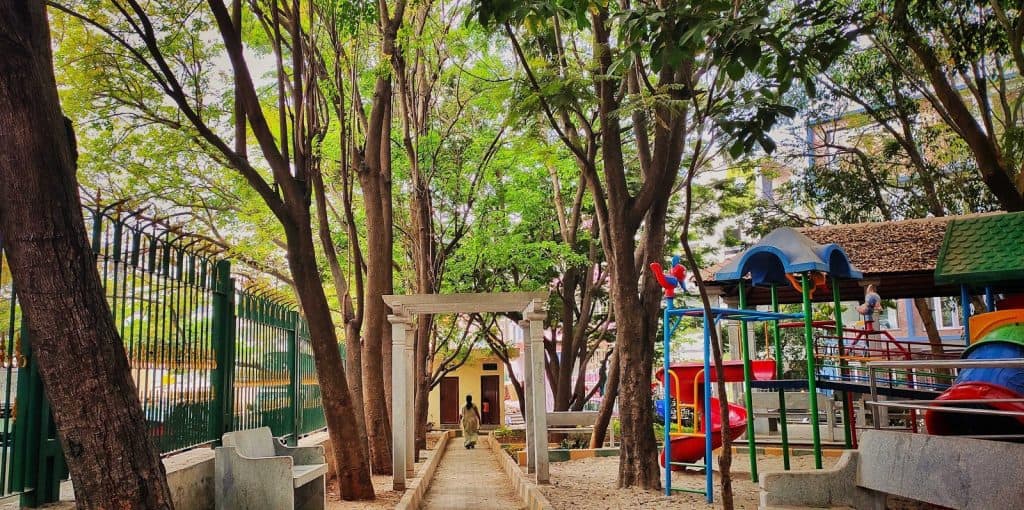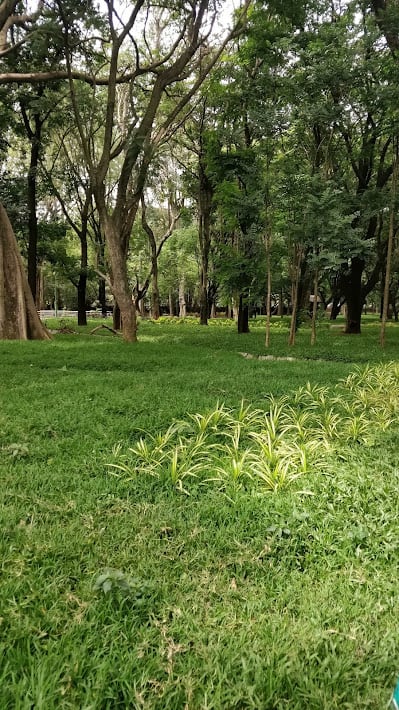Last year, controversy arose over the Karnataka government’s decision to create a ‘tree park’ in the 600 acre Turahalli Reserve Forest on the outskirts of Bengaluru. Protestors questioned the conversion of an existing forest into a ‘tree park’; asserting that the ‘tree park’ would resemble ‘horticulture parks’ with manicured lawns and ornamental plants and not real ‘forests’. The project was stopped temporarily.
In mid-2021, walkers around the forest noticed signs of activity. Work on the ‘tree park’ had restarted without any consultations with citizen groups or locals. The forest department had built a park with statues of tigers, peacocks, bugs, etc. Social media was inundated with images, comments about the shoddy quality of work and jokes about the secrecy of the operation.
Elsewhere in the city, the government is embarking on ‘eco parks’ at railway stations, ‘white topping’, concretisation of stormwater drains (rajakaluves) and the ‘beautification’ of lakes. Chances are, if you live in Bengaluru, you would have heard these terms before. Most of them are unique to the Bengaluru government’s vocabulary.

Total confusion
To the average citizen, engagement with urban design in public infrastructure is perplexing at best. Throw in jargon and the topic becomes even more obscure. The reality is that it shouldn’t be. The application of a standard international vocabulary to infrastructure work in the city would help citizens understand the situation instead of creating a new confusing language of design.
Internationally, metropolises like Seoul, Singapore and Bangkok have carved out urban forests from the concrete jungle to provide space for nature and wildlife and improve the lives of city dwellers. Conceptually similar on paper, the Indian Government plans Jan Van’s/urban forests in 200 cities across the country.
Modelled on this ‘Jan Van’ concept, the Go Karnataka Tree Park scheme was initiated in 2011-12 and ostensibly 132 tree parks have been created in the state. According to the Karnataka Forest Department, these Tree Parks are created in or near urban locations to provide urban dwellers an opportunity to experience nature at an accessible distance… and include basic public amenities like walking paths, nature trails, drinking water facilities, children’s play area, toilets, etc.
Unfortunately, most of these Tree Parks encroach on real forests like Turahalli, instead of creating new green spaces. By encroaching on real forests that provide ecosystem services (clean air, groundwater recharge, flood control buffers, wildlife habitat and natural recreational areas) to city residents, these Jan Van parks act more as an extension of the ‘remunerative’ agenda of the city. Soon the encroachments convert into housing, industry, commercial areas and public infrastructure.
Read more: How public spaces can be redesigned to make ‘unlocking’ safe in Bengaluru
Forest departments, typically conservative and protective of forests, have little say in town planning and land-use decisions of the city. Additionally, most of the ‘eco’ projects described earlier are focused on services to citizens and not the facilitation of ecosystem services. This is in direct contradiction to the concept of ‘Green/Eco Space’.
Government zoning labels are not consistent around the world. Nor do they describe environmental features that are critical to assess if infrastructure is going to support human and non-human life. But attempts must be made to do so.
When a government is largely managed by engineers, they tend to focus on human based solutions and definitions and ignore macro climatic and ecological solutions. Even the horticultural department of the BBMP (limited in capacity and power) and the forest department use terms and definitions that are anthropological rather than ecological.

Vague definitions
Engaging with the green cover of the city in this anthropomorphic way is problematic. Describing an urban environment as a ‘human-dominated ecosystem’ omits the land-use, demographic, ecological and social details that might be the focus of that environment. Zoning labels and definitions in the Revised Master Plan (RMP) etc, are often inconsistent and do not describe environmental features that are critical to assess if the green space is going to support human and non-human life.
Relying on common land use nomenclature, such as park, is problematic because they could be culture-specific. Similarly with the beautification, concretisation and white topping projects across Bengaluru.
Read more: India urgently needs urban forests. What’s stopping us from creating more?
Increase in public awareness towards high quality living environments has led to landscape being seen as an important component of the urban environment. Urban beautification is now seen as cosmetic and its vocabulary needs to be expanded beyond the western, picturesque tradition of landscaped municipal parks and public urban spaces. The new vocabulary must include a more holistic reading of people and place and engender integrative solutions that address socio-economic, environmental and heritage concerns.
Contemporary processes of urbanisation present major challenges. However, it is critical to understand the terms usually associated with public infrastructure development internationally. How green space/anthropology/sources of livelihood, the fabric of lived-in experiences and collective identities define the vocabulary of the city’s public infrastructure.
Bengaluru needs to be seen in its wholeness; a network of greenspace, where the scale is city-or landscape-wide and its function is in harmony with its inhabitants. This includes its literature, language and vocabulary.
I think we need to take a step back and look at what Bengaluru was and what made it different, what made it really the Garden City. Was it just about a Cubbon Park and a Lalbagh or the many hundred parks that followed them through the 20th century and later? Or was it the fact that Bengaluru was dotted with avenue trees just about everywhere without any sunlight making its way to the ground? We don’t need to look at international to define our parks, the city itself was a garden, which has now been brought down in the name of road-widening projects and flyovers. The quality of life needn’t improve only by having urban forests or by having tree parks. Parks can still be the way Bengaluru understands its modern parks to be – a mix of services, a shared public space and an ecological space with a mix of forested area and manicured lawns and gardens. Lalbagh and Cubbon Park have all these characteristics. I’m of the opinion that what Bengaluru needs is to get back to its avenue trees, plant trees that suit the local climate and provide shade at the same time. We need to discourage the hoardings and the act of cutting trees to increase visibility of the buildings and hoardings. As mentioned in this article, the involvement of engineers always looks for the latest technology that can be deployed. We need ecologists and forest officers to take over urban forests and convert the urban space itself to a forest.